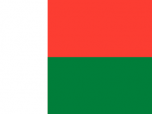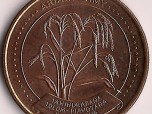
 The fourth largest island in the world, Madagascar, lies at the tip of southeast of the African continent along the Indian Ocean. Archaeologists continue to speculate when this island nation broke off the mainland.
The fourth largest island in the world, Madagascar, lies at the tip of southeast of the African continent along the Indian Ocean. Archaeologists continue to speculate when this island nation broke off the mainland.
Antananarivo is the capital of Madagascar. This city is filled with things to do in every street corner. You will find everything you want to take back home, sunglasses, flowers, fruit, calculators, live animals and even cell phones.
With a population close to 21 million as of 2009, Madagascar has a land area of 226,957 square miles. English, French, and Malagasy are this country’s official languages. The official currency is the Malagasy ariary. When planning a visit, you will need to obtain a visa to enter the country.
Madagascar is home to seventy varieties of lemurs, you know, those wide-eyed primates, and you may happen to catch a glimpse of a few of them if you visit the Reserve Speciale De L’ankarana, the Parc Nacional D’ankarafantsika, or the Anja Reserve. Madagascar is also home to the largest and smallest of chameleons, and the fossa (close relative of the mongoose), just to name a few of the wildlife found here.
If you enjoy plants and vegetation, you’re in for a treat when you visit Avenue Du Baobab in Morondava and spiny looking forests near Ifaty in Southern Madagascar. Baobabs are shaped like bottles, wide at the bottom and narrows at the top with its branches going everywhere.
Only a handful of airlines fly into Madagascar, plan your trip wisely and prudently. Markets abound for your shopping pleasure. And for the epicurean at heart, you have your fill of a variety of restaurants. Madagascar cuisine is composed of a rice base. India, china, France, East Africa, and Arabian cultures have contributed in forming the culinary products of Madagascar. Street foods like the mofo gasy (Malagasy bread), mokary (with shredded coconut), mofo sakay (spicy bread), and mofo baolina (corn flour donut) are worth venturing into.
The weather is constant, Madagascar is worth visiting anytime of the year, May to October, the dry months, October to April can get hot, while November through March are the “wet” months, heavy rainfall descends on this island more this time than any time of the year. If you don’t mind that, you’re good to go.








